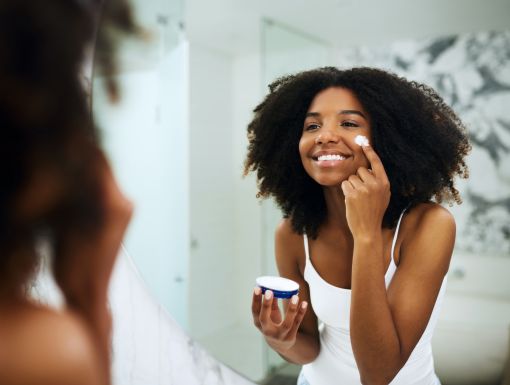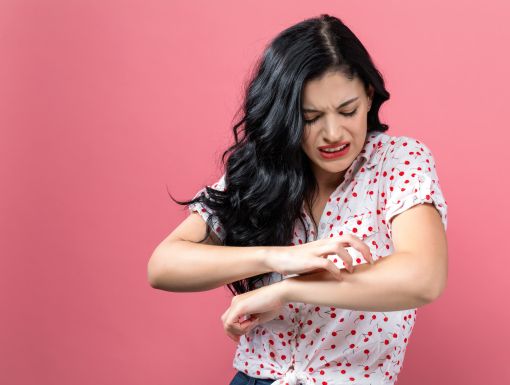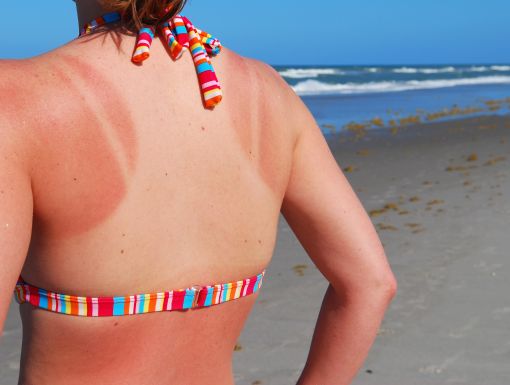
Help! I Have Bed Bugs
I don’t know about you, but I don’t think there is anything worse than going to sleep in a nice, cozy bed and waking up with little, red bites all over your body. Sound the alarms! Burn the bed. I’m packing my bags. Bed bug bites are the last thing anyone wants to wake up to. Before you pack your bags, we will help you figure out if you have bed bugs, what the bites look like and how to treat the bites.
What are bed bugs?
While bed bugs are annoying and their bites can cause some serious itching, they are not known to spread any diseases to humans. Bed bugs are nocturnal. They typically hide in beds, carpets, curtains, clothes and small crevices during the day and are more active at night. Like many other small critters, adult bed bugs are:
- A red-brown color as adults. As eggs, they are a white-clear color. As babies they start off white-translucent and start to change colors when they feed off the host’s blood.
- Small and flat, and they typically measure one-quarter inch long.
- Wingless - They do not fly or jump, but they can crawl very quickly and are hard to catch.
There are several ways bed bugs can get into your home. They can jump on your pet, purse or backpack and hitch a ride into your house. You may accidentally bring in an upholstered piece of furniture that carries the tiny bloodsuckers or if you live in a multi-unit complex, they can travel in through other apartments.
How do you know if you have bed bugs?
The first sign of bed bugs is clusters or groupings of red bites with a small dark dot in the middle. The bites will typically be itchy and swollen. Bed bugs can bite anywhere on your body, but you will notice most bites happen on areas of exposed skin… beware nude sleepers. These bites may form blisters, cause a skin infection or cause you to have an allergic reaction. If you noticed any of these skin conditions, you should make an appointment with your Ochsner dermatologist for further inspection.
In addition to bites on your body, you’ll also want to look for some other tell-tale signs that you may have a bed bug problem. Be on the lookout for:
- Bloodstains on your sheets, blankets, mattress or couch
- Bed bug droppings. If you see small black spots, this could be a bed bug excrement.
- Bed bug exoskeletons. Bed bugs shed their outer shell, so be on the lookout for small shell-shaped remains wherever the biting is occurring.
Treating bed bug bites
If you have bed bug bites, you will want to treat both the bites and your home.
There are a few different courses of action your dermatologist may take when treating your bites. In most cases, the worst part of the bite is the itchiness. Your dermatologist will typically recommend a simple application of a corticosteroid, anti-itch cream. In more serious cases, you may develop an allergic reaction. If you have an allergic reaction to the bites, your dermatologist may suggest an injection of an antihistamine, corticosteroid or epinephrine to calm the reaction. Your bites may also become infected if you continue to scratch them. If your bites become swollen or produce puss, they are likely infected, and your dermatologist may prescribe an antibiotic or topical cream depending on the severity.
In addition to treatments your dermatologist provides, you can use ice packs to relieve the itchiness and continue to wash your bites with mild soap and cold water. Bites will typically heal within a week or two.
The next major step to ensure your bites go away is treating your home so that you do not continue to get bitten. Wash your sheets, blankets, slipcovers, clothes and anything washable in the areas where you noticed the bed bugs. Place everything in the dryer for 30 minutes to kill any last remaining bugs. Vacuum your rugs and floorboards, and immediately throw the bag away outside in a sealed container. Finish off the process by spraying your furniture, box springs, coach and any area you noticed the bed bugs with a bed bug repellent spray. This will help prevent new bed bugs from climbing up.
Finally, if you are unable to handle the problem on your own, it is best to seek out professional help. While it can be a financial burden, your skin and peace of mind will thank you.



